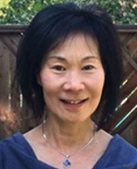
Sustainability, bio inspiration and interdisciplinarity have been constants in the scientific work of You-Lo Hsieh, a Distinguished Professor at the University of California, Davis (UC Davis) and Berkeley (UC Berkeley).
This scientist will be at the XVII B-MRS Meeting talking in a plenary lecture about her strategies to overcome the challenges of processing biomass, thus generating new useful nanomaterials.
Professor Hsieh has authored more than 200 papers, some book chapters and several patents. She has also edited a book. Her scientific production has more than 12.000 citations and she has an h-index of 50 (Google Scholar).
Professor Hsieh received her PhD degree in polymer chemistry from the University of Maryland, College Park, in the United States.
See ou mini interview with You-Lo Hsieh.
B-MRS Newsletter: – We want to know more about your work. Please choose a paper of your own (your favorite one) related to the subject of the plenary lecture and briefly describe it, as well as share the reference. Also, give us an example of a nanomaterial generated from biomass. Specify the raw material that is used to produce it and the applications it finds.
You-Lo Hsieh: – My group has derived nanocelluloses from various biomass feedstock, mostly from un- or under-utilized agricultural crop residues or food/beverage processing byproducts, such as wine grape skins, tomato pomace, cotton linter, almond shells and hulls, etc. We have developed new methods to simultaneously functionalize and defibrillate cellulose into surface active or reactive nanocelluloses. The article provided* illustrates the examples of amphiphilic aerogels from cellulose nanofibrils derived from rice straw cellulose. These nanocellulose based aerogels are among the lightest (2-8 mg/cc) and porous (>99.5% porosity) aerogels as well as super-absorbent of both hydrophiphilic and hydrophobic, capable of absorbing up to 350 times of aqueous or organic liquids. Most importantly, these nanocellulose aerogels are highly resilient in the wet state.
* Jiang, F., Y.-L. Hsieh, Amphiphilic superabsorbent cellulose nanofibril aerogels, Journal of Materials Chemistry A, 2: 6337-6342 (2014).
For more information on this speaker and the plenary talk she will deliver at the XVII B-MRS Meeting, click on the speaker’s photo and the title of the speech here https://www.sbpmat.org.br/17encontro/home/
